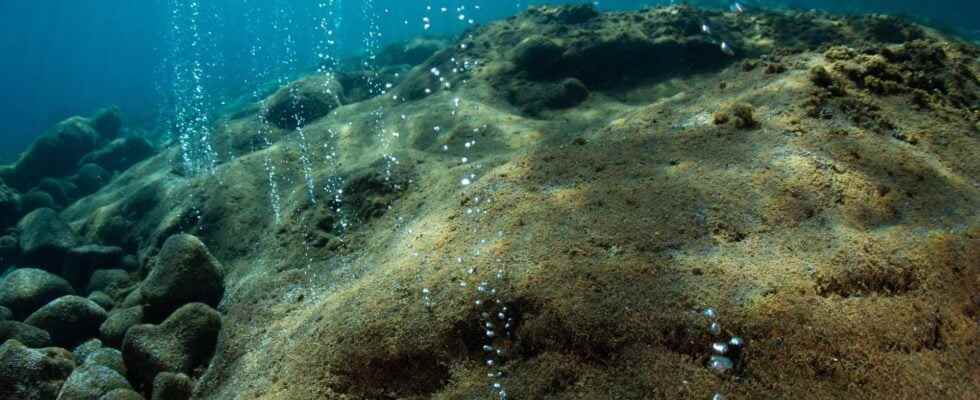A prism ofaccretion represents a structure of tectonic origin linked to the accumulation of sediments at the level of a subduction.
Scaling and sediment build-up
In subduction zones, the oceanic crust plunges under another crust (continental or oceanic). This process of recycling of the oceanic crust is essential in tectonic plates. Besides the generation of arc magmatism, the subduction process can lead to the creation of an accretion prism. Indeed, the oceanic crust, which is about to plunge under the overlapping plate, carries a certain thickness of sediment, all the more important as the crust is old. In some cases, the overlapping plate will form a rigid stopper which will gradually scrape the sediments present on the plunging plate. At the level of the subduction pit, an imbrication of sedimentary scales will thus form: the accretion prism.
Over time, the accretion prism can grow to several kilometers thick, 20 to 40 km, such as the accretion prism south of Vancouver Island. This strong accumulation of sediment creates conditions of high pressure but of low temperature, which allow the metamorphism of buried sediments. These environments thus allow the genesis of rocks belonging to the facies of shale blue, even eclogites.
Architecture of an accretion prism
In general, the architecture of an accretion prism can be broken down into two parts: a surface part which is formed by the frontal accretion of sediments and a deep part which is formed by under-plating of sedimentary material entrained in greater depth.
The internal architecture of the accretion prisms is complex. In general, the prism is built by stacking scales which will form a fan, the oldest scales being progressively raised and verticalized by the more recent scales. Above this fan-shaped structure, there are often gravity slides like turbidites (avalanches underwater sediment). The sediments participating in these gravity slides can come from the prism itself or come from the continental margin. It appears that the accretion prisms are made up of sediments and rocks of very different origins. In addition to the sediments brought by the oceanic plate, there are fragments of oceanic crust (underwater volcanic residues or islands delaminated during the entry into subduction) and overlapping plate sediments (erosion of the volcanic arc or the continental crust).
The geometry and detailed architecture of the accretion prisms, however, vary widely. They are controlled by various factors, in particular the shape of the stopper, the quantity of sedimentary material arriving in the subduction zone, or the angle of the subduction plane. In some cases, a large quantity of sediment will succeed in passing into subduction without entering the prism, thus bringing a large quantity of water in depth, which causes a volcanism calco-alkaline at the level of the volcanic arc. Conversely, some subduction zones have a geometry that prevents any entry of sediment into subduction. In other cases, the contribution of debris of continental origin can be so important that it will modify the geometry of the accretion prism by preventing the lifting of the oldest scales.
Eroding or accreting margin
The accretion prism is not a generality and its presence is not systematic at the level of subduction zones. They are only found at the margins known as tectonic accretion. Conversely, in the so-called tectonic erosion margins, the subduction process will gradually erode the overlapping margin from below by tearing off fragments of the crust which will be transported, then accumulated further under the continental plate, which may cause uplift. (case ofAltiplano). In this case, there is no accretion prism. This is the case with the margins of Guatemala and Peru, for example. The presence or absence of an accretion prism seems to depend above all on the quantity of sediment available.
The best known accretion prisms are those of Barbados in front of the Antilles arc, Nankai in southern Japan, Costa Rica and Oregon. These accreting margins grow towards the ocean by the accumulation of sediment.
Accretion paleoprisms in mountain ranges
Relics of ancient accretion prisms can be seen in the mountain ranges, which result from closing an ocean by subduction, then from the collision of masses continental. In this context, it is not impossible to find the remains of accretion paleoprisms, as is the case in the Alps with the Lustrous Shales.
You will also be interested
[EN VIDÉO] A billion years summed up in 40 seconds: plate tectonics Researchers have modeled the movements of tectonic plates over the past billion years.
Interested in what you just read?
.
fs12
